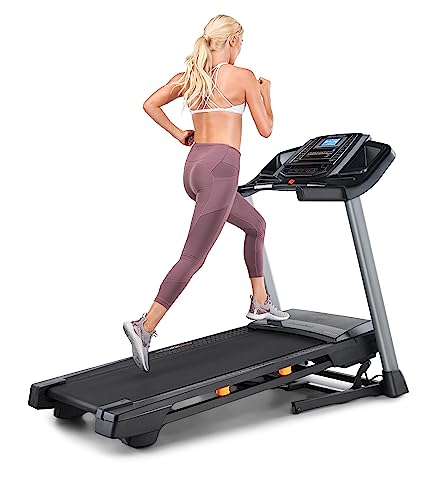Running Machine Incline The Process Isn't As Hard As You Think
Understanding the Benefits of Running Machine Incline: Elevating Your Workout
When it comes to indoor exercises, the running machine, often referred to as a treadmill, stands as one of the most popular and versatile pieces of devices available. From novices to marathon runners, treadmills accommodate a large range of physical fitness levels and goals. Among the most helpful features of a treadmill is the incline setting. Adjusting the incline can substantially modify the intensity and efficiency of a running or walking workout. This post dives into the different advantages of using the incline feature, providing insights for fitness enthusiasts wanting to optimize their treadmill exercises.
Benefits of Running Machine Incline
Enhanced Caloric Burn
- Running or walking on an incline can raise the heart rate and boost calorie expenditure. By replicating uphill surface, the body works harder, leading to increased energy expenditure throughout the workout. Research study suggests an incline boost of simply 1% can lead to a noteworthy increase in calories burned.
Enhanced Muscle Engagement
- Making use of the incline function engages numerous muscle groups more than level running. It mostly targets the calves, hamstrings, glutes, and quadriceps, leading to better strength and endurance over time. The added resistance challenges the muscles, helping them grow more powerful and more toned.
Lowered Impact on Joints
- Lots of runners experience discomfort during long terms, especially if their kind is compromised or they're working on difficult surface areas. Operating on a treadmill with an incline can alleviate some influence on the joints. By shifting some weight onto the upper body, the incline can lower stress on knees and ankles.
Increased Cardiovascular Health
- The incline setting can elevate the heart rate, offering cardiovascular benefits comparable to those obtained from high-intensity interval training (HIIT). Regularly incorporating incline training into workouts can help enhance aerobic fitness and heart health.
Range and Motivation
- Among the primary challenges of keeping an indoor exercise regimen is monotony. Switching in between various incline levels not just adds variety to an exercise but likewise keeps users engaged and inspired. Whether it's a high incline or a steady rise, varying the routine can generate better total performance.
Simulating Outdoor Running Conditions
- For individuals who are training for outside races, treadmill incline settings can carefully simulate the conditions encountered on natural terrains. This can be especially beneficial for getting ready for occasions that involve hill runs.
Reliable Ways to Incorporate Incline Into Your Workout
Hill Intervals: Alternate between high-intensity running on an incline and durations of walking or flat running to produce a challenging period exercise.
Steady-State Incline Run: Set a moderate incline (around 3-5%) and maintain a stable pace for prolonged durations to construct endurance.
Incline Walk: For beginners or those looking for a low-impact alternative, walking on an incline can offer an energetic workout without the stress of running.
Incline Pyramid Workout: Gradually increase the incline every few minutes up until reaching a peak before gradually reducing back to absolutely no. This challenges the body while improving stamina.
Incline Sprints: Incorporate short and fast sprints on a high incline followed by healing periods. This can assist enhance speed and cardiovascular health.
Suggestions for Incline Training
Start Slow: For beginners, it's essential to gradually introduce incline into workouts. Starting with Incline Treadmil (1-2%) can help the body get accustomed to the change.
Concentrate on Form: The incline can modify running form. Keep an upright posture, avoid leaning too far forward, and preserve a natural stride to prevent injury.
Warm Up and Cool Down: Always heat up before beginning an incline exercise and cool off later to allow the heart rate to return to regular and prevent potential muscle stress.
Screen Heart Rate: Keeping track of the heart rate during incline workouts can help make sure that users are working out within suitable intensity levels for their physical fitness objectives.
Hydrate: Considerable sweating may take place throughout incline workouts, so staying hydrated is essential for efficiency and recovery.
Frequently Asked Questions About Running Machine Incline
1. Is it much better to stroll or run on an incline?
Both walking and working on an incline provide unique advantages. Walking is low-impact and more accessible for newbies, while running raises heart rate and burns more calories in a shorter duration. The best choice depends upon private physical fitness goals and physical conditioning.
2. How high should I set the incline?
For beginners, beginning with an incline of 1-2% is a good idea. As strength and conditioning improve, gradually increasing the incline to 5-10% can take full advantage of advantages.
3. Can I use the incline function for my whole exercise?
Integrating the incline for the whole workout can be useful, but it is also important to blend in durations of flat running or walking to stabilize the workout and decrease the danger of injury.
4. How much additional calories can I burn by utilizing the incline?
The calorie burn is influenced by various elements such as body weight, exercise strength, and duration. Normally, operating on an incline can increase calorie burn by around 10-30% compared to running at a flat level.
5. Is it safe to work on a steep incline?
While running on a steep incline can offer exceptional benefits, it's essential to listen to the body and make sure correct form. Individuals with pre-existing conditions or injuries ought to consult a health care expert before engaging in high-incline workouts.
In conclusion, incorporating incline settings on a running machine can elevate the effectiveness of indoor workouts noticeably. With boosted muscle engagement, increased caloric burn, and benefits akin to outdoor running, the incline feature acts as a necessary tool for anybody seeking to maximize their treadmill experience. By understanding how to utilize this function effectively, fitness enthusiasts can accomplish their workout objectives, remain motivated, and keep a healthy and active lifestyle.
